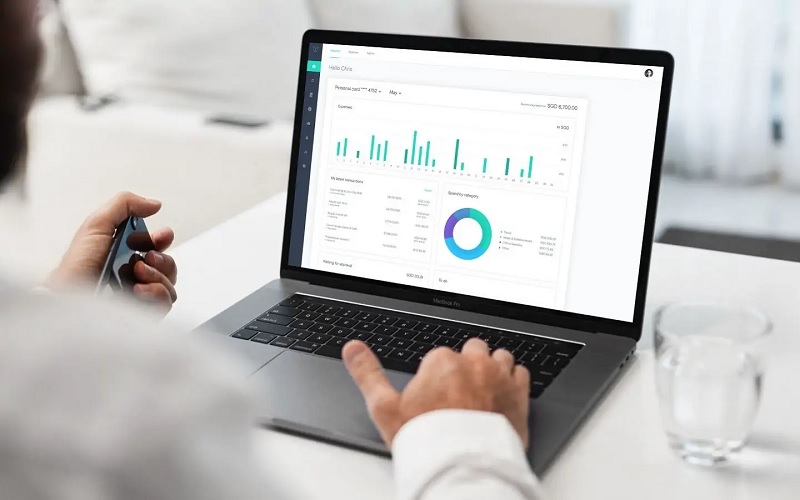Guide 101: 7 Top Features To Look For In Expense Management Software

Businesses have often suffered because of lengthy and error-prone traditional expense management systems. Accountants are hired to manage the expenses and often fail to keep up with their hefty schedules of manual work. Moreover, when they do, there is a possibility of errors.
People have realised the shortcomings of such systems, but they don’t make the switch. Why? Unawareness, lack of guidance, and confusion due to the availability of numerous options in the market are probably the reasons why businesses can’t opt for expense management software.
Out of the hundreds of expense management solutions available, look for the features further discussed in this article and make an informed decision.
What is Expense Management Software?
Expense management software is a computer program that enables individuals or businesses to automatically track, manage, and analyse their expenditures. The software streamlines and automates the procedure of recording expenses, reimbursing employees, and submitting expense reports.
Automation in expense reporting makes the expense management process much easier than the traditional one. The software solution discards probable human errors and saves time, energy, and expenses simultaneously.
Effects of Traditional Expense Management on Businesses
Traditional expense management poses a range of challenges for businesses, such as:
- Time-consuming processes: Traditional systems often involve much of manual processes, like spreadsheets, paper receipts, and manual data entry, which are time-consuming and error-prone.
- Lack of control and visibility: Traditional expense management lacks real-time visibility, making identifying and addressing spending trends difficult before they become significant problems.
- Inadequate workflows: Traditional expense management may cause sluggish processes and delays, which lowers efficiency.
- Compliance issues: Businesses must ensure compliance with policies and regulations to avoid fines, penalties, and reputational damage, which is difficult in traditional systems.
- Fewer insights and reporting: With traditional expense management systems, businesses may be incapable of generating insightful reports and analytics; thus, decision-making and planning are affected.
- Raised risk of fraud: Increased risk of fraud, as tracking and verifying expenses becomes difficult.
What to Look For In an Expense Management Software?
One must look for the following 7 features in expense management software to make a wise choice.
1. Real-Time Visibility
Expense management software assists in analysing data for businesses to make strategic decisions based on expenditure. Unnecessary expenses are easily avoided after reviewing the analytics. Real-time reports track violations by employees and reconcile expense reports with business credit card invoices.
2. Expense Reporting Process
Expense reporting refers to the process of managing employees’ business expenses in one place. The software must assist the claim process, gather digital forms, and process them since the business is required to refund these costs. Good software ensures that the employees need not wait forever to get their money back.
3. Digital Receipt Capture
It is quite challenging to keep paper receipts while travelling. Reimbursements in case of lost receipts are delayed. Expense management software solves this problem by enabling digital captures of receipts. Look for software that uses OCR technology to make it easier for employees to register expenses and present receipts.
4. Syncing with Accounting Software
Software that integrates with the primary accounting platforms is a good choice. Such software facilitates the automatic publication of the data and the corresponding transactions in real time. The expense reports are exported in PDF and CSV formats or sent via automated email. An additional image-sharing feature helps businesses share their financial data and reports with anyone.
5. Intuitive dashboard
All processes of expense management software combine to form an intuitive dashboard. A dashboard offers deep insight into a business’s expense reporting processes. Here various components are present in different sections, which are easily understandable.
6. Mobile app
A user-friendly mobile app which is easy to navigate is a must-have in an expense management system as an app gives the utmost convenience to the users. Here, employees may create, manage, and submit their expenses directly owing to mobile accessibility. Review and approval of the reports are also carried out from anywhere.
7. One-click expense Approval
One-click expense approval allows users to quickly and effortlessly approve their expenses with one click. One-click and a list of expenses ready for approval appear, which are approved all at once. Approved expenses are automatically synced with the user’s accounting software. This feature saves time and is important for managers or business owners to stay aware of their expenses and keep their registers up-to-date.
Conclusion
According to surveys, by 2029, the market for expense management software is expected to expand at a compound annual growth rate of 6.9%. Knowing the features of the software for expense management will help businesses in the selection process to find the most suitable software. So, it is the prime need of the hour for business people and managers to opt for the best Expense management software that makes their processes seamless.